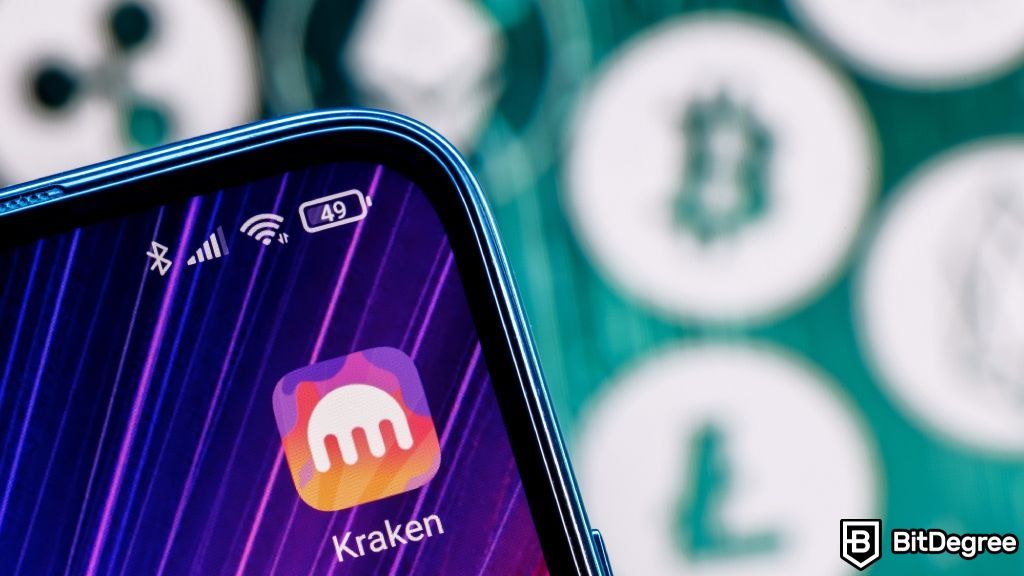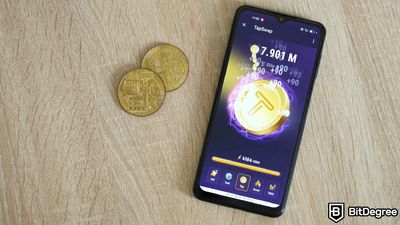Key Takeaways
- Margin trading on Kraken allows traders to participate in spot trading using borrowed funds;
- Kraken margin trading fees vary within a competitive range of 0.01% to 0.02%, depending on the selected margin pair;
- Margin trading can significantly magnify both gains and losses. Therefore, the golden rule of margin trading is to invest only what you can afford to lose.
Stop overpaying - start transferring money with Ogvio. Sign up, invite friends & grab Rewards now! 🎁
Cryptocurrency trading has undergone a remarkable evolution, transcending the traditional notions of buy-and-hold strategies. It now thrives in a dynamic landscape filled with abundant opportunities, and one of the most intriguing avenues to explore is Kraken margin trading.
So, let’s peel back the layers of the Kraken margin trading platform, uncovering its hidden gems that will empower you to harness the full potential of margin trading in the ever-evolving cryptocurrency market.
If you'd still prefer the aforementioned "traditional buy-and-hold" approach, check out Ogvio - a self-custodial crypto wallet & remittance platform. It's a unique approach to interacting with crypto, offering users some of the biggest benefits in this space.

Did you know?
Subscribe - We publish new crypto explainer videos every week!
How to Get Free Crypto? (Explained with Animations)


Table of Contents
- 1. What is Kraken Margin Trading?
- 1.1. Spot Trading With Margin VS Without Margin
- 1.2. Understanding Leverage in Spot Transactions
- 2. Kraken Margin Trading Fees
- 3. Who Can Trade Margin on Kraken?
- 3.1. US Clients: Self-Certification as Eligible Contract Participants
- 3.2. Canadian Clients: Self-Certification as Permitted Clients
- 4. How to Margin Trade on Kraken?
- 4.1. Settling or Closing a Spot Position on Kraken
- 5. What About Kraken Pro?
- 6. Conclusions
What is Kraken Margin Trading?
Let's first explore what Kraken margin trading is and how it can empower you in the exciting world of cryptocurrency trading.
Latest Deal Active Right Now:Margin trading is a powerful tool that allows traders to maximize their exposure to cryptocurrency markets, potentially amplifying both profits and losses. Kraken, one of the leading cryptocurrency exchanges, offers a robust platform for margin trading, catering to both novice and expert traders.
Margin trading is a method of trading in which you borrow funds to trade assets to amplify the potential returns on your investment.
In other words, Kraken margin trading allows you to trade a more substantial position than your account balance would typically allow. This means you can potentially profit from price movements with a more significant impact than traditional spot trading.
So, what are the key features of Kraken margin trading?
- Leverage. Kraken offers varying levels of leverage, allowing you to control larger positions with a smaller initial investment. This can amplify your potential profits, but it's essential to manage the associated risks carefully.
- Advanced Trading Tools. Kraken offers a suite of advanced trading tools and charting features to help you make informed decisions. You can set stop-loss orders, take-profit orders, and use tools to refine your trading strategies.
- Margin Pairs. Kraken margin trading offers over 100 margin pairs, enabling you to trade crypto-to-crypto and fiat-to-crypto pairs. This flexibility allows tailoring your trading to specific preferences and market conditions.
- Risk Management. Managing risk is crucial in margin trading. Kraken provides risk management features like margin liquidation and margin call warnings to help you avoid significant losses.
Now, let's explore how this differs from traditional spot trading.
Spot Trading With Margin VS Without Margin
Primarily, Kraken operates as a "spot market" exchange, allowing users to buy and sell currencies instantly. However, for those eligible, Kraken also offers the option to leverage their trades through margin. Let's delve into the distinctions between these two approaches.
In the realm of non-margined spot trading on Kraken, you rely on your "balance". This means you must have sufficient funds in one currency to exchange for another.
For instance, if you wish to trade USD for BTC on the BTC/USD trading pair, you need to have a USD balance. After executing a non-margined spot exchange, your corresponding balances remain available for further exchanges or withdrawals.
For most non-margined spot exchange orders, the “Simple order” form will suffice. It's a straightforward process that requires having enough funds in your account for the desired trade.

On the other hand, when you engage in spot trading with margin on Kraken, you enter the realm of "positions". This means you can buy or sell cryptocurrencies without holding a balance in the specific asset you wish to trade, as long as you maintain sufficient collateral currencies.
Kraken extends the necessary funds for the entire value of your trade when trading with margin.
However, it's important to note that using margin comes with obligations and conditions that you must adhere to until they are satisfied. These obligations are associated with what Kraken terms an "open position".
During this period, the funds used as collateral are not available for trading or withdrawal. Your assets from margined spot transactions are tracked in your "positions" tab, separate from your "balances" tab.
Despite this separation, when you employ margin on Kraken, you genuinely engage in spot purchases or sales of cryptocurrency on the Kraken spot market exchange. You maintain ownership and control over these assets and can withdraw them from your Kraken account at your discretion, subject to the platform's Terms of Service.
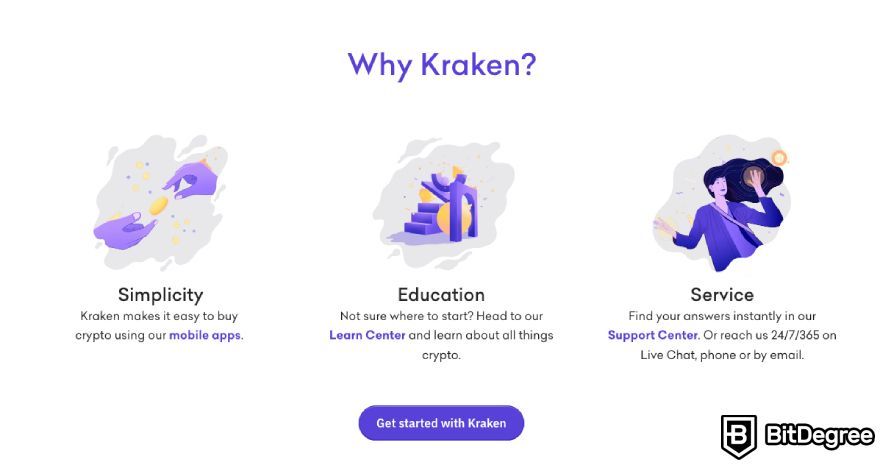
Margin trading also allows you to take "long" and "short" positions.
Going long means buying an asset you don't currently hold, with the expectation of its price rising. This can be done without margin by using the funds in your balance to make a direct purchase, too.
Conversely, going short involves selling an asset you don't possess, speculating that its price will decrease. This is only possible with margin, as you use borrowed funds to sell an asset you don't own.
Besides, when utilizing Kraken's order forms, you have the option to select a level of leverage (e.g., 2x, 3x, 4x, 5x, 10x). This selection indicates your request for the exchange to provide a margin extension for your spot purchase or sale of cryptocurrency. Overall, Kraken allows up to 10x leverage in margin trading.
It's important to note that leverage can only be chosen from the “Advanced order” form. Additionally, some trading pairs are exclusively available for non-margined spot transactions, meaning you won't have the option to select leverage for those order books.
Understanding Leverage in Spot Transactions
Now, it’s essential to grasp how leverage functions in spot transactions on Kraken margin trading, as it can significantly impact your trading strategy.
As you already know, spot transactions on margin at Kraken allow traders to buy and sell cryptocurrencies using funds that go beyond the balance of their accounts. Leverage, in this context, serves a dual purpose.
- Used Margin. This refers to the portion of your collateral balance held aside when you engage in a spot transaction on margin.
- Maximum Position Size. It determines the maximum amount of margin that Kraken is willing to extend to you for a spot transaction on margin, often referred to as your maximum "position size".
Used margin is a critical concept to understand. It is calculated by dividing the size or "cost basis" of the margin extension you receive by the level of leverage you choose.
Let's illustrate this with an example.
Imagine you wish to purchase $5,000 worth of Bitcoin on Kraken using a margin extension. With 10x leverage, only one-tenth of the position size, which is $500, will be withheld from your collateral balance when you buy BTC. If you opt for 2x leverage, half of the position size, which amounts to $2,500, will be withheld from your collateral balance upon purchasing BTC.
Contrast this with trading without any leverage, where you would need a $5,000 balance to make the same purchase, and this balance would be directly exchanged for the equivalent amount in BTC.
Your potential for profit and risk of loss, including the possibility of liquidation, are influenced by the size of your open positions relative to your collateral balance[1]. It's crucial to understand that the level of leverage alone does not dictate your position size.
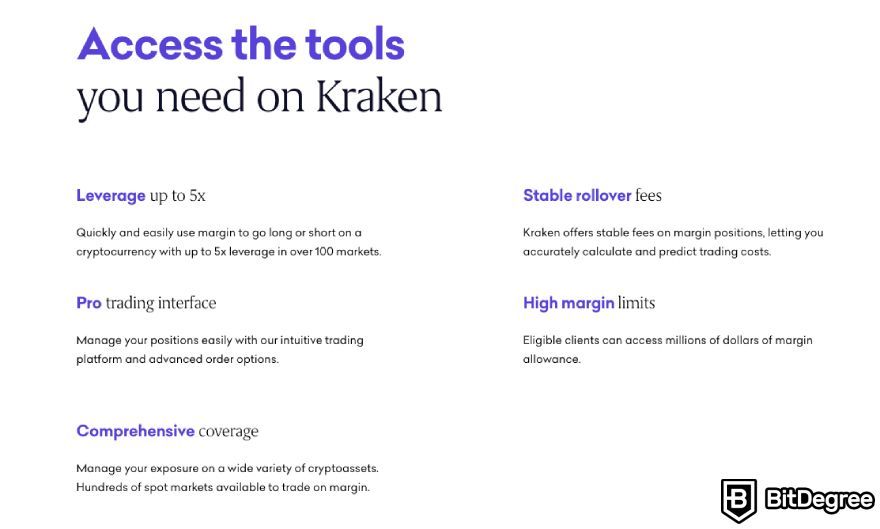
When you place a margin trade, you have the flexibility to select your position size independently from the chosen leverage level. Opting for 10x leverage, for instance, does not automatically make your position size ten times larger. It simply means you can specify a position size of up to 10x your collateral balance.
Choosing the appropriate level of leverage depends on your risk tolerance and trading strategy[2]. Still, there are some general concepts that you should take into account.
Higher leverage can leave more free margin in your account, providing a larger buffer from liquidation when the position size remains the same.
However, if you maximize your position size based on the leverage chosen, higher leverage levels come with increased risk.
Ultimately, the key to success in Kraken margin trading lies in finding the right balance between leverage and position size that aligns with your financial goals and risk appetite.
Remember that cryptocurrency markets can be highly volatile, and prudent risk management is paramount when exploring the opportunities offered to margin trading Kraken clients.
Kraken Margin Trading Fees
Kraken offers a straightforward and transparent fee system designed to provide stability and predictability for traders.
When you open a margin position, Kraken margin trading fees are fixed. These fees vary depending on the specific margin pair you're trading, typically falling within the range of 0.01% to 0.02% of the total position value. It's important to note that these fees apply at the outset of a margin trade.
In addition to the opening fees, Kraken imposes rollover fees for maintaining open positions. These rollover fees are identical in amount to the opening fees and occur every 4 hours while the position remains open. This regularity allows traders to plan and manage their trading costs effectively.

Beyond the specific Kraken margin trading fees for openings and rollovers, it's essential to factor in the standard trade fee when opening and closing positions on margin. This fee is calculated based on the trade volume, and there's no fee for settling a spot position on margin.
Kraken margin trading fees are calculated based on the total value of the margin extended for your trade, with no deduction for collateral held in your account.
For instance, if you decide to go long on the BTC/USD pair, the fee rate will be 0.015%, and the fee amount will depend on the quantity of USD involved. Conversely, going short on BTC/USD results in a fee rate of 0.010%, with fees based on the quantity of BTC sold.
Do the fees seem too high? While you can't trade margin on Ogvio, crypto transfers to both platform-based users, as well as external wallets, are completely free of charge!
Who Can Trade Margin on Kraken?
Now, let's delve into Kraken margin trading requirements, helping you understand who can participate in this exciting financial activity.
Before diving into the specifics, it's essential to note that Kraken's margin trading services come with certain geographic and eligibility limitations. These limitations are in place to comply with regulatory requirements and ensure responsible trading practices.
So, what are the Kraken margin trading requirements?
- Intermediate and Pro Clients Outside the United States. If you are an Intermediate or Pro client residing outside of the United States, you're in luck. Kraken's margin trading services are readily available to you. These clients have the privilege of accessing the service without any additional Kraken margin trading requirements beyond their existing account status.
- Intermediate and Pro Clients Within the United States and Canada. Clients within the United States and Canada who aspire to engage in margin trading need to meet specific Kraken margin trading requirements. But let's discuss that a bit later.
First, let's address this question: what is required to qualify as an Intermediate or Pro client?
To qualify as an Intermediate client, you must provide essential personal information, including your email, full name, date of birth, phone number, physical address, occupation details, Social Security Number (for US clients), a valid ID, proof of address, and a face photo.
Pro clients have access to advanced features but must meet more stringent requirements. In addition to the Intermediate client criteria, Pro clients need to complete a Know Your Customer (KYC) questionnaire and enable two-factor authentication (2FA) for added security.
US Clients: Self-Certification as Eligible Contract Participants
For US clients eager to engage in margin trading on Kraken, an additional step is necessary. They must self-certify as an Eligible Contract Participant (ECP) as defined by US law. This certification process is in accordance with Section 1a(18) of the Commodity Exchange Act.
US clients who are not already Intermediate or Pro clients must first achieve Intermediate status before they can self-certify as ECPs. Existing US Intermediate or Pro clients who haven't previously traded on margin will also be asked to self-certify during their first margin trade.
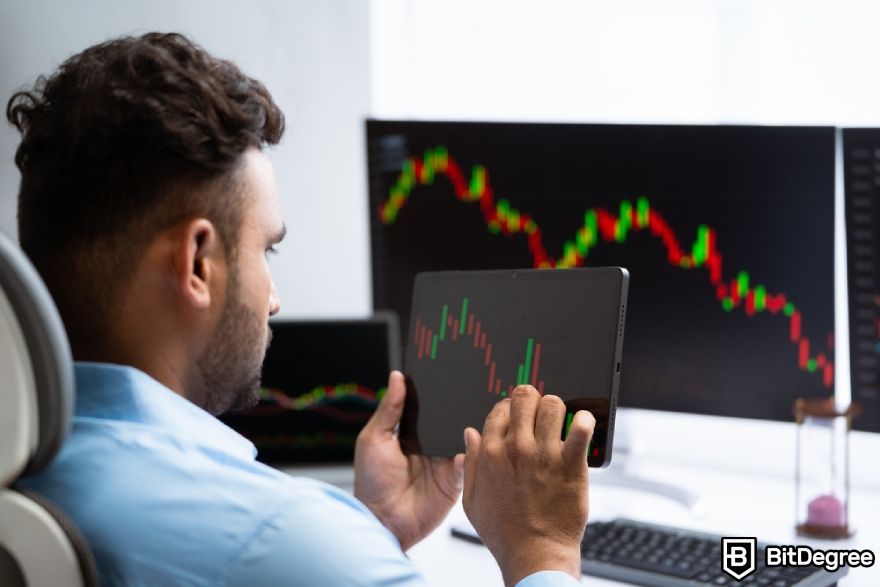
To qualify as a Permitted Client under this definition, individuals must have more than $10 million in assets invested on a discretionary basis. This includes assets such as crypto, stocks, bonds, mutual funds, real estate, and cash held for investment. Personal residences and non-investment assets are not considered.
Canadian Clients: Self-Certification as Permitted Clients
Similarly, Canadian clients interested in margin trading on Kraken must self-certify as Permitted Clients as defined by Canadian law (Section 1.1 of National Instrument 31-103).
Canadian clients who are not Intermediate or Pro clients must first attain Intermediate status before self-certifying as Permitted Clients. The same applies to existing Canadian Intermediate or Pro clients when attempting a margin trade.
To qualify as a Permitted Client in Canada, individuals must beneficially own financial assets with a value exceeding CAD $5 million. This calculation focuses on net financial assets (assets minus liabilities) and includes cash, stocks, bonds, mutual funds, and cryptocurrencies. Real estate is not considered part of this assessment.
How to Margin Trade on Kraken?
Now that you know what Kraken margin trading is, as well as its fees and requirements, it's time to talk about the burning question: How to margin trade on Kraken?
So, let's delve into the intricacies of margin trading on Kraken, demystifying the process for both newcomers and experienced traders.
But, as a side note, know this: whether you're using the Kraken user interface or the Kraken Pro app, the path to trading on margin is as straightforward as selecting your desired level of leverage.

Did you know?
Subscribe - We publish new crypto explainer videos every week!
What is Olympus DAO? (OHM Crypto Animated Explainer)



- Secure and reliable
- Accepts fiat currencies
- Lots of trading options
- Reputable exchange
- Accepts fiat currencies
- Offers various trading options

- Huge trading variety
- Regulation-compliant around the globe
- Fair trading fees
- Beginner-friendly
- A wide array of features
- Vast number of different crypto coins & tokens

- Beginner-friendly
- Secure
- Decent trading and withdrawal fees
- Crypto.com Visa Card
- Automated tools & bots
- Ecosystem synergy with CRO
Settling or Closing a Spot Position on Kraken
If you're a Kraken client exploring the world of margin trading, understanding how to settle or close a spot position is crucial. This process involves fulfilling your obligations, including returning the borrowed margin, and it can be done through position settlement or closing transactions.
Let's break down how each of these methods works.
Position Settlement
Position settlement is the straightforward method of closing all or part of a spot position on margin. To do this, you transfer funds directly from your account balance, with no need for an actual trade.
But here's the catch: the funds you transfer must match the type of currency used for the initial margin extension. For instance, if you borrowed a margin denominated in BTC, ensure you have enough BTC in your account to settle the position. Still, if your account balance falls short, you can deposit additional funds to cover the gap.
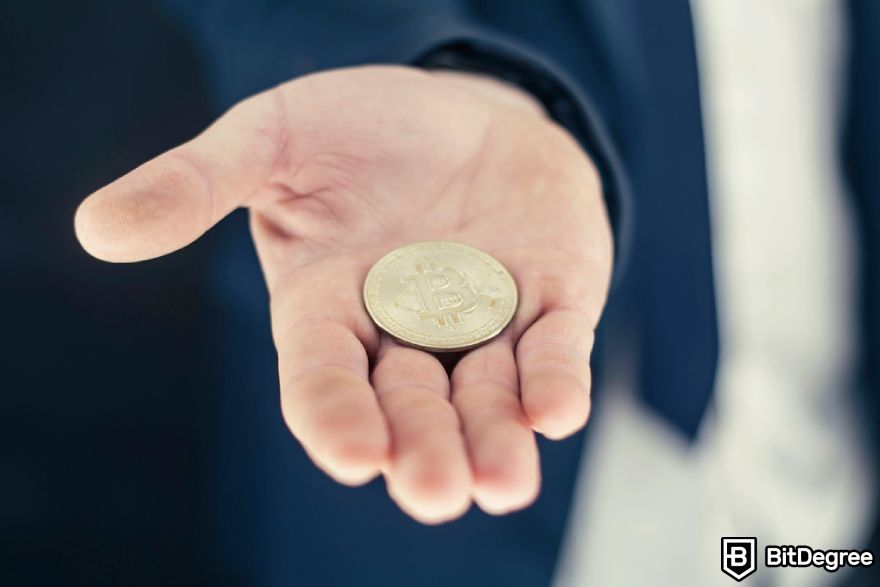
In cases where you have sufficient funds but of a different type, you can execute an order to acquire the necessary funds. Remember that if you have multiple open positions on margin, they will be closed following the First In, First Out (FIFO) rule.
Closing Transactions
Closing a spot position through a closing transaction involves executing an opposing order for a volume equal to the one that opened your position. Selling closes a long spot position, while buying closes a short spot position.
The proceeds from this transaction first satisfy your margin obligation to Kraken. Any remaining profit or loss is added to or deducted from your account balance, denominated in the quoted currency of the trading pair you're using (e.g., EUR in the pair BTC/EUR).
However, if your account lacks the necessary funds in the quoted currency to cover potential losses, your account funds may be converted into the required currency, subject to conversion fees. To avoid this, consider executing an order for the needed funds before closing the position.
Remember, the FIFO rule also applies to multiple open positions on margin, and each position follows the same logic for handling losses.

To initiate a closing transaction, you need to use the “Advanced order” form on the “New Order” page.
Leverage selection is a key step; you must choose a level of leverage to indicate your intent to enter a closing transaction. The chosen leverage doesn't need to match the leverage used when opening the position, as it mainly informs Kraken's system about your transaction type.
Ensure that the closing transaction order is in the same currency pair as the order that opened your spot position on margin. To completely close the position, enter the same amount as the opening order.
Be cautious; executing a closing transaction for a larger volume can create a new spot position on the opposite side, known as "flipping" the position.
Kraken provides a handy “Zero Volume” feature. If you place “0” as the amount in a closing transaction order, you can close the entire volume of all open positions for a specific pair with a single order. This feature proves useful when you want to close multiple spot positions for a specific market, adapt to changing position sizes during periods of volatility, or close small remaining volumes.
What About Kraken Pro?
While looking for Kraken margin trading information, you might've stumbled upon Kraken Pro. But what is it?
At its core, Kraken Pro is a one-stop destination for advanced crypto traders.
It combines a host of powerful features, offering access to spot, margin, futures trading, and staking, all within a single, seamlessly integrated interface. This means that you can explore a diverse array of trading tools without switching between multiple platforms.
One of the standout features of Kraken Pro is its high level of customization. Traders have the freedom to choose as many, or as few, trading modules as they desire from an extensive list.
You can resize, drag, drop, and arrange these modules to create a pixel-perfect layout that suits your trading style and preferences. This level of flexibility empowers you to tailor your trading environment to match your unique needs.
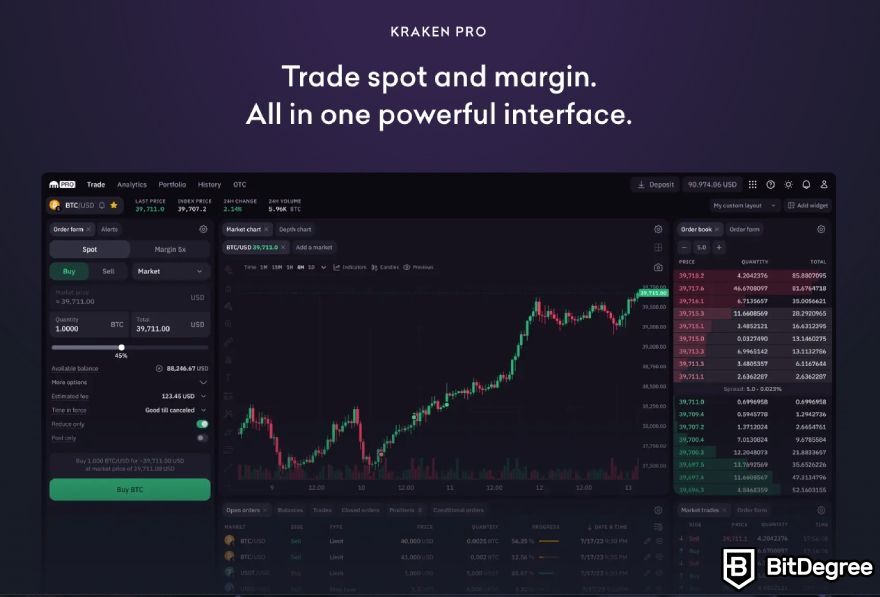
Kraken Pro simplifies the process of navigating the cryptocurrency landscape. With its all-in-one interface, you can effortlessly switch between spot, margin, futures trading, and staking. Furthermore, it allows you to track your performance with ease by providing a clear, consolidated portfolio view.
Besides that, in the fast-paced world of crypto trading, having access to real-time market data is essential. Kraken Pro delivers this with a fast and responsive user interface. Live market data feeds into the platform, enabling you to make informed decisions and seize opportunities as they arise.
Whether you're looking for advanced charting, order types, or risk management tools, Kraken Pro has you covered. It addresses all your trading needs in one place, eliminating the need for third-party applications.
But how to margin trade on Kraken Pro? Well, simply select the Margin tab when filling the order form (by the way, you can either participate in margin trading via the usual Kraken interface or Kraken Pro).

It's important to note that, behind the scenes, Kraken Pro shares the same order book, highly liquid markets, and world-class security that the Kraken exchange is renowned for.
Signing up for Kraken Pro is straightforward. It's available to anyone who is 18 or older and resides in a supported region. The good news is that there are no additional requirements. If you're already using Kraken, you can seamlessly start using Kraken Pro without the need for a separate account or upgrade.
For those concerned about fees, Kraken Pro maintains the same fee structure as the Kraken exchange. There are no hidden spreads or changes to worry about, ensuring transparency and predictability in your trading costs.

In summary, Kraken Pro is the ultimate platform for advanced crypto traders. It offers a feature-rich, highly customizable interface that streamlines trading across spot, margin, futures, and staking.
With real-time market data, advanced tools, and a seamless transition between markets, Kraken Pro empowers you to stay ahead in the dynamic world of cryptocurrency trading. Whether you're new to crypto or a seasoned pro, Kraken Pro provides the edge you need to maximize your opportunities.
Besides, if you'd rather return to Kraken, you can do so by clicking on it from a menu at the top right corner of your screen. All Kraken platforms are integrated, and you can choose the interface and features that better suit your needs and knowledge.
Conclusions
Kraken margin trading is a valuable resource for both beginners and experienced crypto traders. It offers a user-friendly interface, educational resources, and strong security measures, making it a reliable choice for maximizing opportunities in the dynamic cryptocurrency market.
If you're looking to diversify your portfolio or explore new trading strategies, Kraken provides the tools and support you need to trade with confidence. So, whether you're a novice or an expert, Kraken can help you gain an edge in the crypto market.
Just don’t forget to be cautious, especially since margin trading means that you’ll be trading with borrowed funds! For a safer "buy-and-hold" approach to crypto investing, check out alternative innovatory platforms, such as the Ogvio neobank.
Not investment advice. Crypto trading involves risk of loss and is offered to US customers through Payward Interactive, Inc. View legal disclosures at kraken.com/legal/disclosures.
The content published on this website is not aimed to give any kind of financial, investment, trading, or any other form of advice. BitDegree.org does not endorse or suggest you to buy, sell or hold any kind of cryptocurrency. Before making financial investment decisions, do consult your financial advisor.
Scientific References
1. Z. Wang, K. Qin, D.V. Minh, et al.: ' Speculative Multipliers on DeFi: Quantifying On-Chain Leverage Risks';
2. J. Bian, Z. Da, Z. He, et al.: ‘Margin Trading and Leverage Management’.
